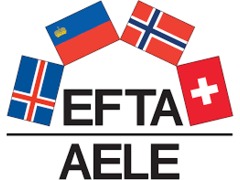Committee for External Relations
Documents from [1961] to [1977]Identity Statement
6 volumes
Alonso Fernandez, Juan; Carr, Mary
Context
The EFTA countries made use of the opportunities provided by the EFTA relationship for consulting each other on general trade matters and on other issues related to the objectives of the Stockholm Convention. These consultations were especially frequent and wide-ranging in the case of their cooperation with the EC, their closed trading partner, but they also covered their particular links with Spain and Yugoslavia on a variety of aspects of international economic affairs..
The EFTA framework continued to be used also for consultations between the EFTA countries on matters of interest that were under discussion in other international organisations or international meetings concerned with the development of world trade. These included the General Agreement on Trade and Tariffs (GATT), the Organisation for Economic Cooperation and Development (OECD) and the International Monetary Fund (IMF). There were also joint initiatives taken with the Nordic Council and special liaisons with CEN (the European Committee for Standardisation) and the EC Commission and with CENELEC (the European Committee for Electrotechnical Standardisation). The European Trade Union Confederation (ETUC) was often represented at EFTA Consultative Committee meetings.
These documents were prepared for external bodies, such as organs of the United Nations.
Content and Structure
Main focal points of meetings were: origin rules, revenue duties, agriculture and fisheries, mutual recognition scheme, convention on hall-marking, patents, technical standards, relations with OECD, GATT, UNCTAD etc.
Conditions of Access and Use
English, French
